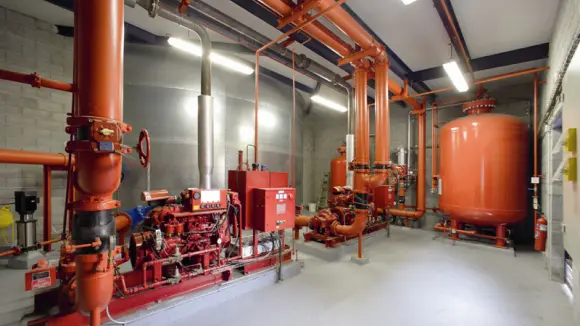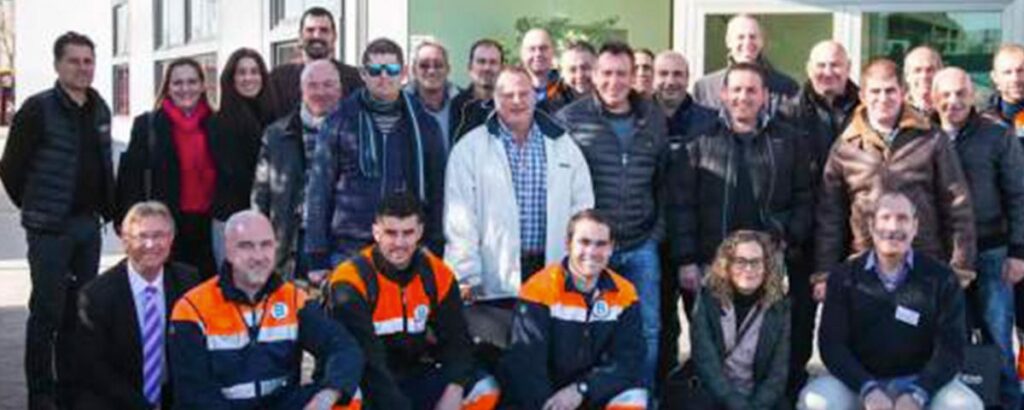Although it is not something new, the application of Article 24 of the Occupational Risk Prevention Law (which is developed in RD 171/2007) is becoming more and more common. In ADR trans, S.L. (and in all the Barcelonesa group) we have a Quality team that guides us and forces us to be up to date with these issues.
Coordination of activities with external agents who have worked at our facilities has always been carried out. Now, what we find ourselves in boom is the need to coordinate activities with different recipients where we have to deliver or transfer liquids in their facilities (or other activities required by our customers). That is why we have learned how to manage all these information requirements, and the use of the different existing digital platforms to manage the Coordination of Activities. We are going to share the know-how obtained in the application of the Coordination of Activities, to see if we can be of help to all of you who are starting with it.
The purpose of this legislation is to guarantee the exchange of information necessary between the different companies to control the interactions of the different activities carried out in the workplace. The Coordination of Business Activities for the Prevention of Occupational Risks is a legal obligation that must guarantee, on the part of those responsible for the companies that concur in a work center, the fulfillment of the following objectives:
- Consistent and responsible application of the principles of preventive action established in the article of Law 31/1995, on Occupational Risk Prevention.
- Correct application of work methods.
- The control of the interactions of the different activities carried out in the workplace, in particular when they may generate risks classified as serious or very serious, or when activities are carried out in the workplace that are incompatible with each other due to their impact on the safety and health of workers.
The Coordination of Activities is an important flow of information between the collaborating companies. Not all the information is related to Occupational Risk Prevention; most of the companies also request information on the company’s tax and administrative situation.
In this way they comply with other laws that are also obligatory, and ensure that they limit liabilities that are also set out in the legislation in force. For example, Art. 42 of the Workers’ Statute obliges the contracting company to request a certificate of being up to date with Social Security payments, or with the insurance policy the contracting company ensures that it will not have to face possible subsidiary liabilities, or according to RD 2011/5 it will be the responsibility of the employer who carries out the contracting or subcontracting of works or services to check the affiliation and registration with the Social Security of the workers who will be in charge of such work.
It is a minimum law, and does not specify which documents must be exchanged, which is why they vary according to the companies, depending on how they want to reinforce security in their facilities. According to our experience in the transport of dangerous goods, we have made a list of the main supporting documents required:
| COMPANY | WORKER | VEHICLE |
| Preventive modality adopted | Current medical clearance certificate | Vehicle registration certificate |
| Risk assessment and preventive measures | Certificate of medical fitness for professional drivers | Technical Data |
| Planning of preventive activities | EPIS delivery list | Technical vehicle inspection (ITV) |
| Document of association to the mutual or contract | Certificate of training and information on occupational hazards related to the activity. | Mandatory insurance |
| Tax identification code | Certificate of safety training in the handling of chemical products. | |
| Certificate of being up to date with payments with the Tax Agency. | Coordination of business activities: accreditation, training and information | |
| Certificate of being up to date with payments to Social Security. | DNI, NIE or Passport | |
| TC1 | RNT (Nominal List of Workers) | |
| Liability insurance policy | TC2 | |
| Nominal Worker Ratio (RNT) | Receipt of payment as self-employed | |
| Driving license or if applicable any specific license (in our case ADR license). | ||
| Authorization for use of machinery | ||
| Provision of safety data sheets on the chemicals to be treated. |
Please note that in all cases where the information requires payment, proof of payment must be provided.
Nowadays, there are digital platforms that facilitate the work and maintenance of this data, since they must be updated according to the expiration date or other customer requirements. Finally, it is important to remember that the aim of the Coordination of Activities is to minimize accidents. That both external workers and contracting companies are aware of the risks involved in the activity to be performed.
Often among so many documents we forget the main objective: safety, a reason of special importance in ADR trans. For this reason, apart from having all the documents that accredit us, we put them into practice.



